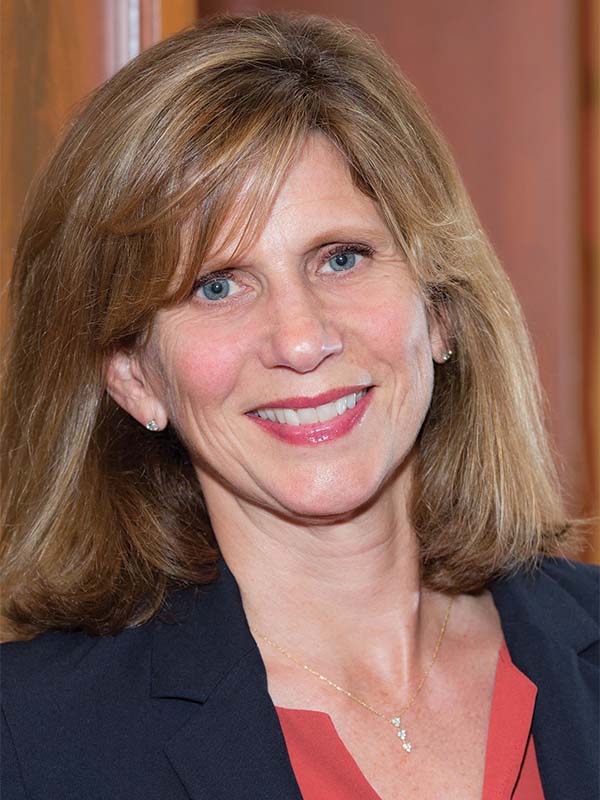As the talent wars continue, community banks can come out ahead with a careful focus on executive compensation and benefits.
In addition to a competitive annual salary and bonus, community banks need to offer an appropriate mix of short- and long-term incentives, compensation consultants say. They advise using the more modern approach of tying compensation to the individual as opposed to a one-size-fits-all model.

“Community banks need to consider the age and demographics of future leaders they are trying to attract and retain, and design compensation based on those needs,” says Karen Butcher, managing director with executive compensation consultancy Pearl Meyer in Boston.
Here are six tips to help community banks win the executive compensation battle.
1. Take the pulse of the market
Understanding the competitive landscape is critical, says Hal Wallach, director of executive compensation consulting at CBIZ Inc.
Nowadays, it’s easy for competitors to attempt to pick off top-level talent with the lure of a significant—20% or higher—salary increase, he says. The issue is compounded by the fact that executives are more inclined to move to other areas of the country for higher wages or a better opportunity.
From a competitive standpoint, compensation is highly correlated with a bank’s asset size, so this should be a consideration for community banks that have experienced or are experiencing significant growth, whether it’s organically or through a merger or acquisition. But staying on top of executive compensation is important even for smaller banks, because the costs of finding new talent add up.
According to compensation consultants, community banks should undertake a market analysis every two to three years. Certain changes in market dynamics may also lead to a need for more frequent analysis. Factors such as a community bank’s size, its expected asset growth, inflation and market appreciation can have a significant impact on compensation levels.
Quick Stat
6.8%
The average increase in bank officers’ salaries in 2022. They’re expected to grow 4.1% in 2023.
Source: 2022 Bank Compensation and Benefits Survey, Crowe Bank LLP
Taking the market’s pulse could be especially important now, given rising inflation and other factors such as the Great Resignation.
Tori Harber, senior vice president and human resources director at $850 million-asset Peoples Bank in Lubbock, Texas, says her bank is planning a review this year.
“It will help the bank assess where we are and where we want to be,” she says.
Many community banks rely on salary surveys, and while those can be helpful, they may not tell the whole picture, says Rob Barton, managing director at Bank Compensation Consulting in Plano, Texas, who designs nonqualified deferred compensation plans for community banks.
Instead, he says, it’s important to use a broad set of survey data as part of the benchmarking process. While he doesn’t do this type of work, he routinely refers banks to consultants that do.
Community banks can also do some of the legwork on their own, such as comparing data from similarly sized public banks in their region, says Mike Blanchard, chief executive officer of Blanchard Consulting Group in Atlanta. This will give them a good sense of what comparable banks paid last year in terms of salary, bonus, stock grants and other benefits. Blanchard recommends community banks gather this publicly available information for 15 to 20 banks in their region.

The goal should be to understand where compensation gaps may exist, says Andrea Parnell, chief people officer at $2.6 billion-asset Southern Bancorp in Little Rock, Ark.
Questions should include: Does the bank have adequate golden handcuffs? Is it tailoring the benefits to each executive? And does the bank offer the right mix of guaranteed cash and discretionary incentive pay?
2. Break down the individual parts
The next step is for a community bank to break down compensation into its various components, which will typically include salary, bonus and other long-term incentives.
Certainly, community banks need to ensure they are paying a competitive salary to attract and retain top-level talent. On average, an officer’s salary rose 6.8% in 2022, compared with 3.7% in 2021, according to the 2022 Crowe Bank Compensation and Benefits survey.
This year, officer salaries are expected to increase 4.1% on average, according to Crowe.
Beyond salary and annual bonuses, banks need to ensure they are offering a mix of long-term incentives. Consider that 42% of participating banks have a formal, performance-based incentive plan for executives, according to Blanchard Consulting Group’s 2022 Compensation Trends and Employee Benefits Survey of 183 banks. Nearly all respondents—92%—paid bonuses/cash incentives based on 2021 performance.
When it comes to other incentives, 43% of banks polled offered some form of equity/long-term incentive program. Of those banks with an equity plan, 45% said they use performance-based granting or vesting. Twenty percent of respondents with an equity plan have formal equity ownership or holding requirements.
Examples of long-term incentive plans include stock appreciation rights or restricted stock. Not surprisingly, the survey found that asset size is a factor in how likely a bank is to use equity/long-term incentives. Banks with more than $1 billion in assets are more likely to use restricted stock or restricted stock units, the survey found.
Community banks that are private or family-owned can use “phantom stock” for key officers, which is typically cashed in or settled after three to five years, Blanchard says.
3. Consider additional high-level benefits
Another popular benefit many community banks offer to current and prospective executives is a supplemental executive retirement plan (SERP).
A SERP can be especially compelling to executives as a way to enhance their retirement savings without the rules or contribution limits associated with a 401(k). What’s more, this type of plan can be offered alongside a 401(k), allowing the executive to set aside more for retirement.
A different option, which Southern Bancorp adopted about three years ago for top executives, is a restricted endorsement bonus agreement (REBA). This acts as a life insurance policy for an executive, Parnell says. It provides an annual bonus to the executive that is used to pay the premium for a personal life insurance policy.
To encourage retention, there are restrictions on the executive’s access to the policy’s cash value. The cost to the community bank is recovered when the death benefit is paid.
There are at least three variations of REBAs with different features and options, Parnell says. Because of the complexity, she recommends community banks consult with a qualified professional who deals in these types of plans.
A similar executive benefit option community banks can offer is split-dollar life insurance. This policy is a form of additional direct compensation.
The community pays some or all of the insurance premiums, and the executive’s beneficiary receives some or all of the death benefit, according to BoliColi.com, which offers executive and director benefit services.
There can be many variables, so community banks should speak to a compensation consultant about which option or options might be best for their situation. Consultants will work with the bank to design a program that works best for a bank’s specific needs.
4. Create customized compensation plans
Executive compensation isn’t a one-size-fits-all approach. Trey Deupree, senior consultant at NFP Executive Benefits, says he encourages community banks to meet with high-level employees to determine what’s important to them and what they value the most. Community banks can then use this information to design tailored compensation plans.
Officers in their 50s and 60s might be most interested in retirement benefits, for example, whereas younger officers might be interested in paying off student loan debt, buying their first home, preparing to welcome a child into their family or paying for their children’s college education.
To illustrate, Deupree says NFP has helped community banks design deferred compensation plans where the payouts coincide with an executive’s children going to college. When they are graduating from high school or ready to go to college, the bank might pay between $10,000 and $45,000 a year toward that goal.
“If you’ve got a 30-year-old loan officer who’s knocking it out of the park, dangling a carrot out 37 years from now makes it hard to keep them today,” Deupree says. But helping them pay for college could be a major retention tool.
Certainly, this type of incentive can make it cost-prohibitive for another bank to snatch up that executive—at least for a defined period of time—since they’d have to replace the lost income, says Tyler Brown, senior vice president and practice leader at NFP Compensation Consulting.
The trick, he says, is to find out what’s most important to high-level employees and design plans specific to those needs.
“You can tie these plans to any number of major life events,” Brown says. “Employees like that it’s personalized.”
5. Consider one-time bonuses

There may be banks whose performance or stock price is struggling based on outside factors, such as the impact of the high-profile failures of Silicon Valley Bank, Signature Bank and First Republic Bank earlier this year.
Community banks that are feeling this type of pressure might consider an additional one-time award—cash or equity—for executives, in addition to their normal bonus, to transfer some of the value that’s been lost, says Brian Dresch, a senior client partner with Korn Ferry's executive pay and governance practice. This could be particularly important now, he says, since unvested, long-term incentive awards may be worth less, lessening the cost of acquisition for a competitor.
6. Understand that nothing exists in a vacuum
Executives require more than just a large paycheck and top-notch benefits to stay long-term. Other critical components, including executive coaching and leadership development opportunities, must be part of the mix, Butcher says. “Otherwise, it doesn’t matter what you’re paying them.”
How to retain young top talent without breaking the bank
What do young bank officers value most in terms of compensation? The answer is: It depends. It’s a good idea to do a deep dive into how younger talent approaches compensation.
“If you have an individual who is single with no family, salary is probably going to be more important than health benefits,” says Mark Magnone, senior vice president and commercial lender at $1.2 billion-asset InBank in Denver. “If you have someone who may be a little older and has five kids, insurance benefits may be more important.”
Every few years, Magnone, who has been with InBank for just over a year, considers how his total compensation compares to others in his market. He looks at salary, monthly health insurance premiums, company contributions to retirement and insurance coverage. He also looks at vacation time and other various perks.
He gets much of his information from local lenders. “Ten years ago, people didn’t talk about this, but society is changing to where it’s more of an open thing,” he says.
This reality makes it more critical for community banks to ensure their compensation is fair and appropriate. “You don’t want to lose your best producer because your compensation isn’t in line with the competitor down the street,” says Christopher Medrano, chief information officer and executive vice president of $707 million-asset Kleberg Bank in Kingsville, Texas.
Community banks shouldn’t wait for young officers to make the first move, Medrano says. Rather, they should do the analysis now to ensure they are not playing catch-up. “Don’t wait until you are about to lose them to show them that you value who they are and what they do,” Medrano says.
Meaningful perks are also a plus for young officers. In 2018, when Rich Eckert became president and chief executive of Beardstown Savings in Beardstown, Ill., a $65 million-asset mutual savings bank, the bank gave him a lump sum to pay off his remaining student loan balance.
Some younger bankers also want to feel rewarded sooner rather than later. So, while Eckert has a supplemental executive retirement plan (SERP), he won’t be vested until age 59 ½, and even then, it doesn’t pay out until age 65.
This isn’t much of a golden handcuff for bankers in their 30s or 40s, he says. That’s one reason Beardstown Savings is finalizing implementation of a five-year rolling retention bonus for top executives. The goal is to reward high-level employees in a relatively short time frame, while also encouraging retention. The idea is that money will accrue yearly based on a percentage of the bank’s earnings and other factors. At year five, the executive will receive the lump sum, he says.
As important as compensation is, however, there’s a bigger picture to keep an eye on. Culture, work environment, flexibility, career development and other on-the-job perks are highly desirable to younger workers in particular. Medrano says he could probably go somewhere else and make more money—especially since he’s in technology. But his bank offers benefits such as flexibility, a positive work environment and the appeal of the job itself.
“It’s not just the money,” he says. “It’s ‘Do I want to be where I’m at, and do I enjoy the people I work with?’”






